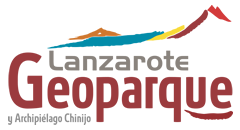Project Description
It is the largest wind dispersing mafic pyroclastic field in all of the Canary Islands, in terms of surface and thickness. Pyroclastic, also called lapilli or rofe by the inhabitants of Lanzarote, come from the historic eruption of Timanfaya (1730-1736) which was previously deposited on the ground. The climate of this area is characterised by a lack of water and strong wind. Therefore, farmers have developed their own technology based on pyroclastic properties, such as a high surface / volume ratio, its low heat capacity, small thermal conductivity and high emissivity. Its open surface cools rapidly at night, resulting in condensation. In this way the condensed water is retained in the pores, and filters quickly. During the day only the open surface is subject to evaporation, as thermal waves barely penetrate the soil. To minimise the wind effect on crops, semicircular stone walls are constructed to serve as protective barriers.
This geosite is of major volcanological interest and also secondary geomorphological and stratigraphic type interest. But La Geria, in addition to its geological value, also enjoys a landscape derived from popular use for agriculture in Lanzarote, where grapevines and other fruit are grown in holes dug in the lapilli. As a result of this, a wine culture and its subsequent tourist exploitation has been implanted. This geosite is part of the Protected Landscape of La Geria.

